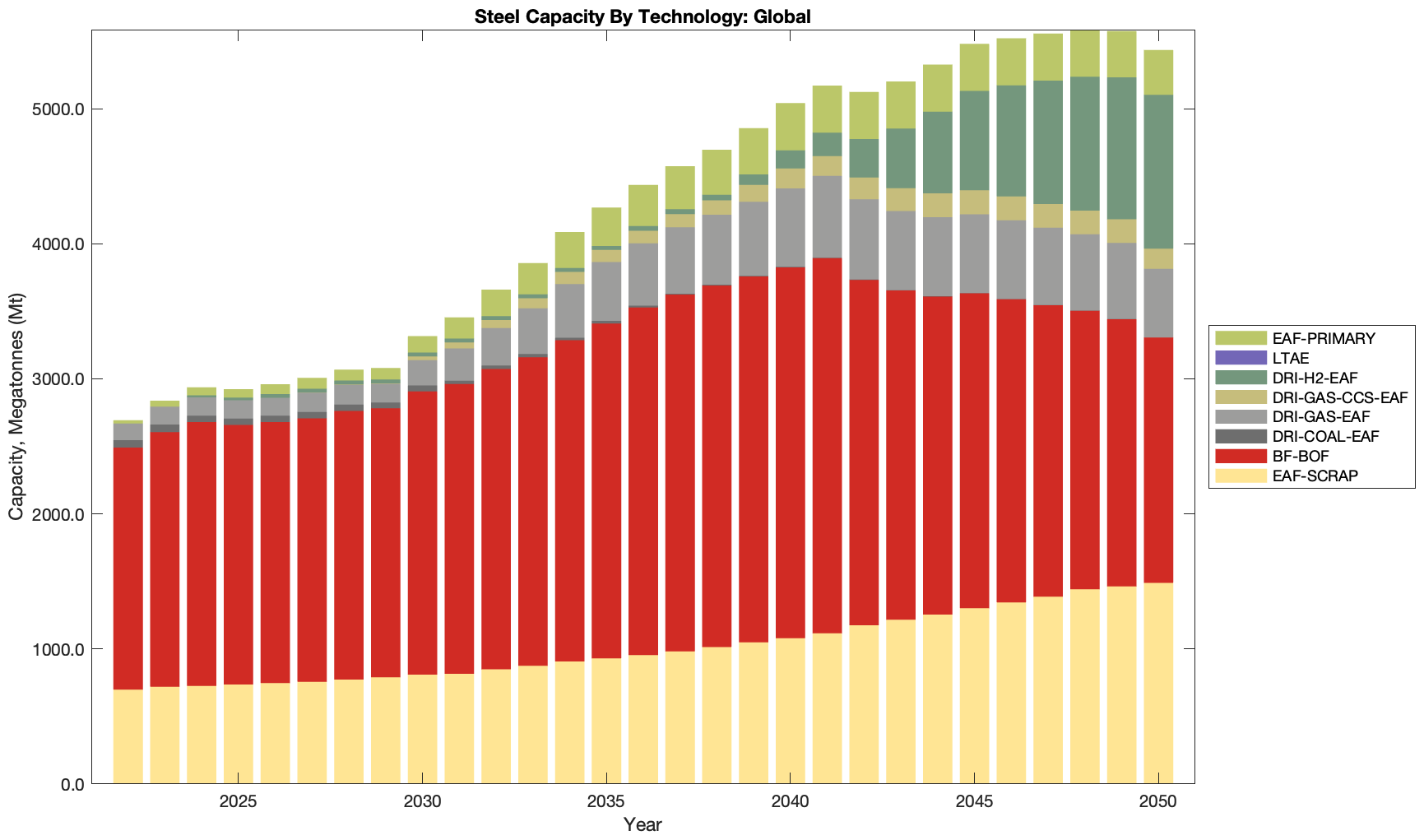Net-Zero Steel Pathways
2024
By 2050, under the Baseline scenario, global steel production becomes significantly more geographically diverse, shifting away from its 2021 concentration in Northeast Asia. Production grows notably in Southeast Asia, South Asia (especially India), the Middle East, Africa, and South America. In Europe, China, and the U.S., most domestic steel facilities transition to recycling using electric arc furnaces (EAFs).
When comparing three climate policy scenarios—Narrow Club, Broad Club, and Broad Club Fossil Fuel Ban—four consistent trends emerge for 2050. First, primary steel production spreads more evenly across the globe, with growth across Southeast Asia, South Asia, Africa, and the Americas. Second, the dominance of coal-based Basic Oxygen Furnace steelmaking (BF-BOF) declines significantly. Third, steel recycling through EAF-SCRAP rises sharply. Lastly, there’s substantial growth in green steel production, including methods using imported green iron (EAF-PRIMARY) and hydrogen-based direct reduced iron (DRI-H2-EAF). These developments suggest a broad global shift toward cleaner, more sustainable steelmaking technologies across all modeled policy futures.
The Broad Club scenario demonstrates a more inclusive climate club with an expanded membership consisting of the EU/EEA, the USMCA trade zone, Japan, South Korea, Australia, New Zealand, the ASEAN Free Trade Area (AFTA), and major iron producers such as Brazil, South Africa, India, Guinea, Ukraine, and Venezuela. Like the Narrow Club, this club imposes a 30% tariff on steel imports from non-club members and employs a GHG intensity-based tariff aligning external carbon prices with those within the club, based on mechanisms akin to the EU CBAM. Members also provide a subsidy of $100 USD (2020) per tonne to promote green iron production, combining domestic governmental policies and potential foreign investments from wealthier club nations. High-income club members adopt carbon pricing or equivalent policy measures starting at $100 per tCO₂e in 2022, increasing to $300 per tCO₂e by 2050, while lower-income club members begin at $30 per tCO₂e in 2022, rising to $100 per tCO₂e by 2050. Non-club members similarly apply less stringent decarbonization policies, starting at $30 per tCO₂e in 2022 and increasing to $100 per tCO₂e by 2050.
Geospatial of Steel Production in Broad Club
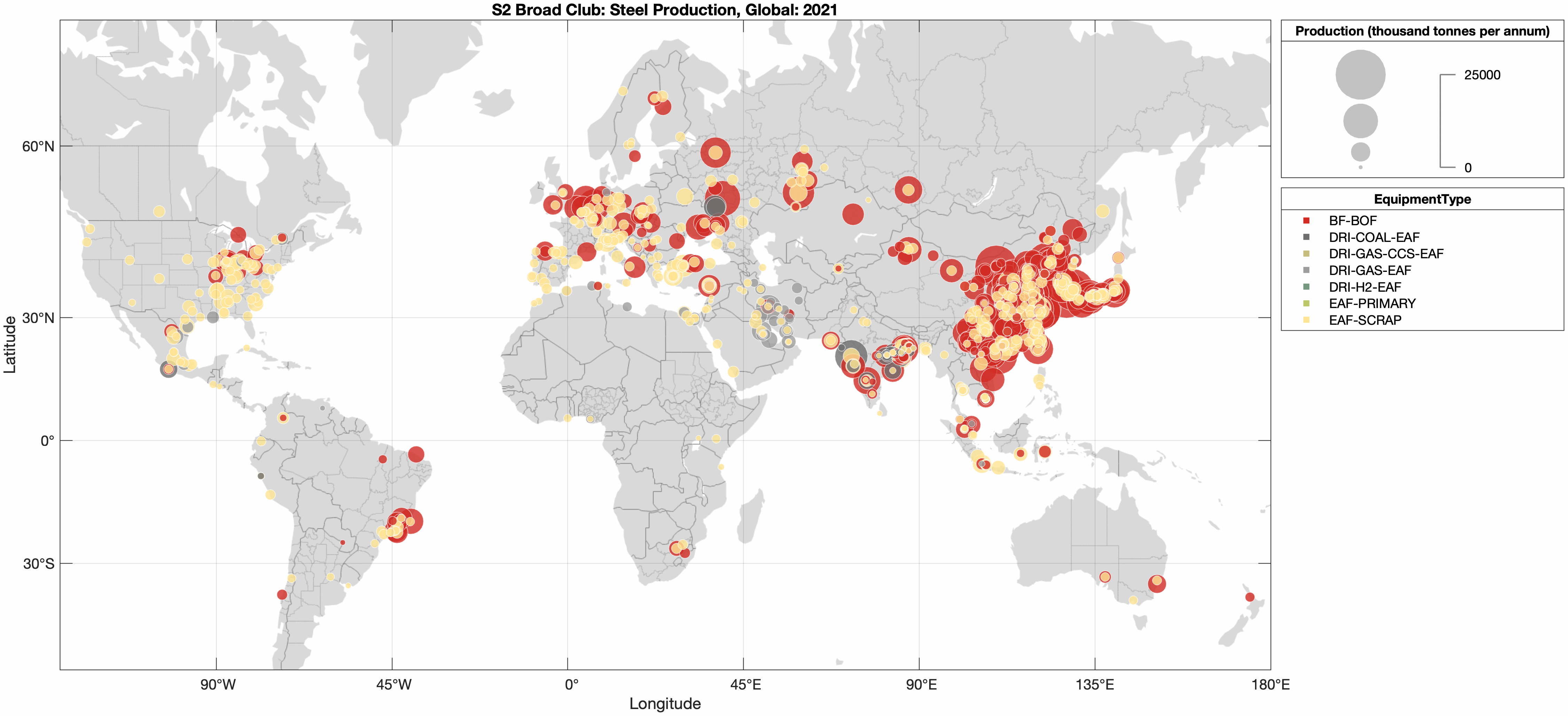
| BF-BOF | Blast Furnace with Basic Oxygen Furnace | |
| DRI-COAL-EAF | Direct Reduction of Iron with Coal, followed by Electric Arc Furnace | |
| DRI-GAS-CCS-EAF | Direct Reduced Iron with Natural Gas, followed by Electric Arc Furnace, 90% of CO2 is Captured and Stored | |
| DRI-GAS-EAF | Direct Reduced Iron with Natural Gas, followed by Electric Arc Furnace | |
| DRI-H2-EAF | Direct Reduced Iron with Green Hydrogen, followed by Electric Arc Furnace | |
| LTAE | Low Temperature Alkaline Electrolysis | |
| EAF-SCRAP | Electric Arc Furnace used with Scrap | EAF-PRIMARY | Electric Arc Furnace used with Green Iron / Hot Briquetted Iron |
Download
Main countries' results (s2)
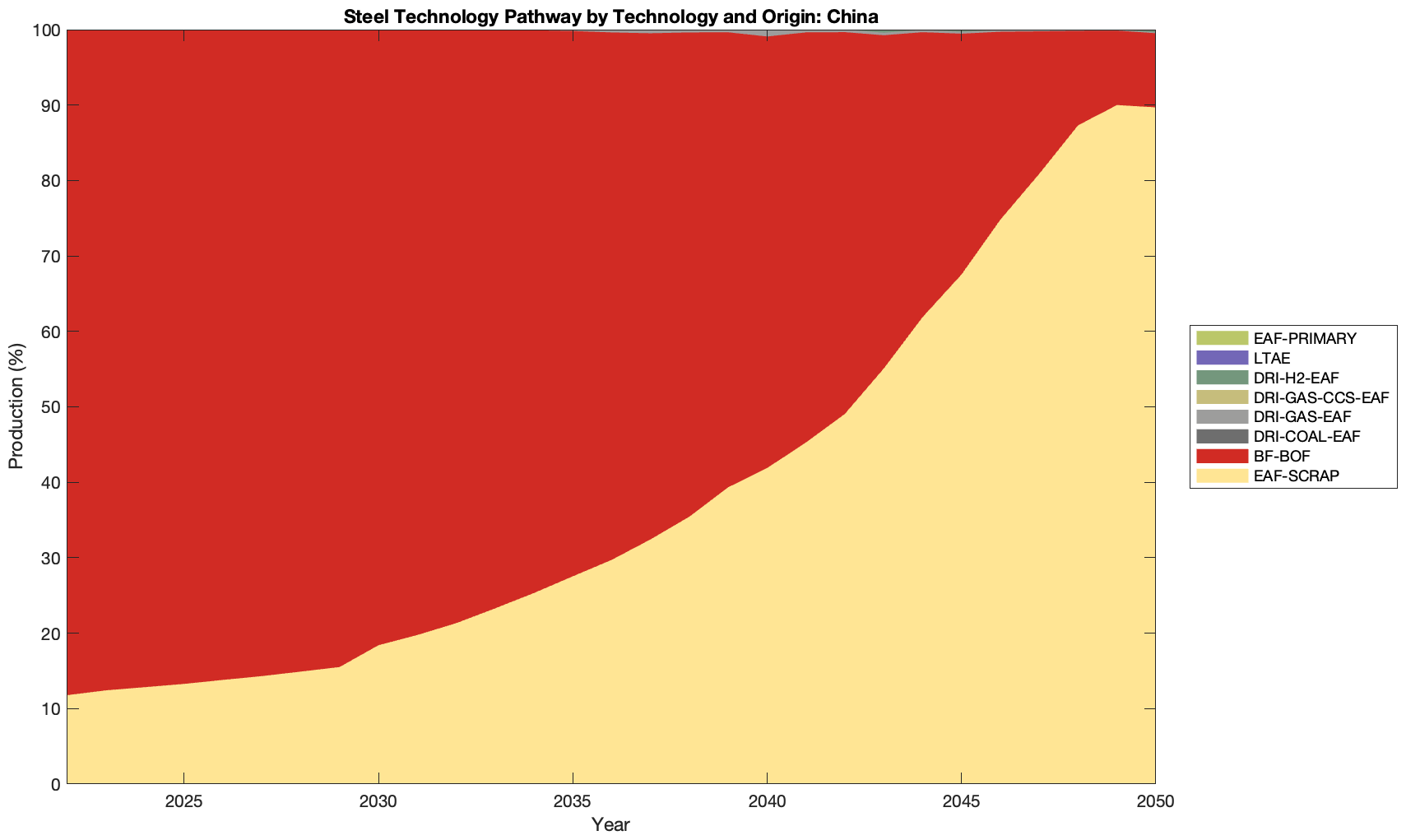


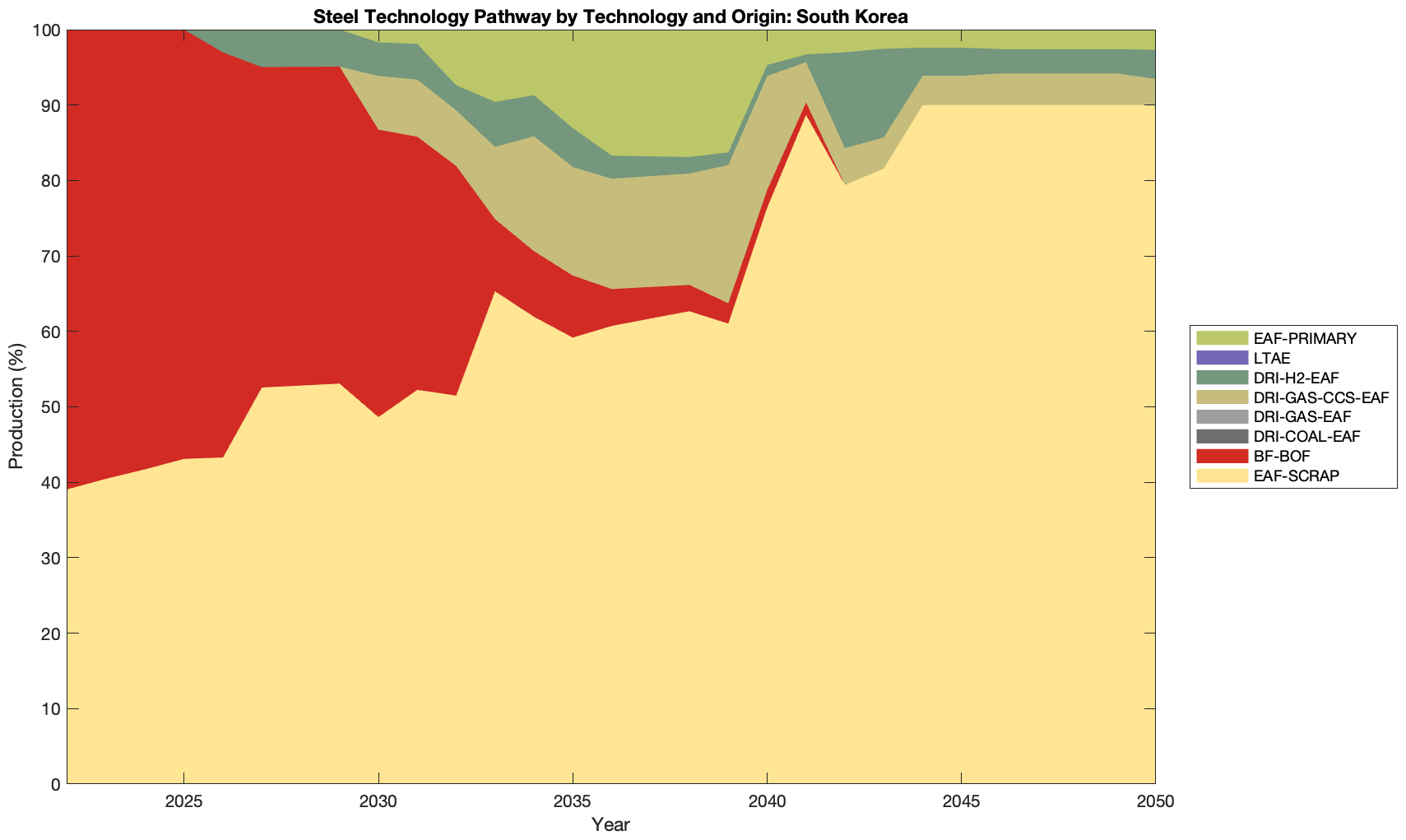
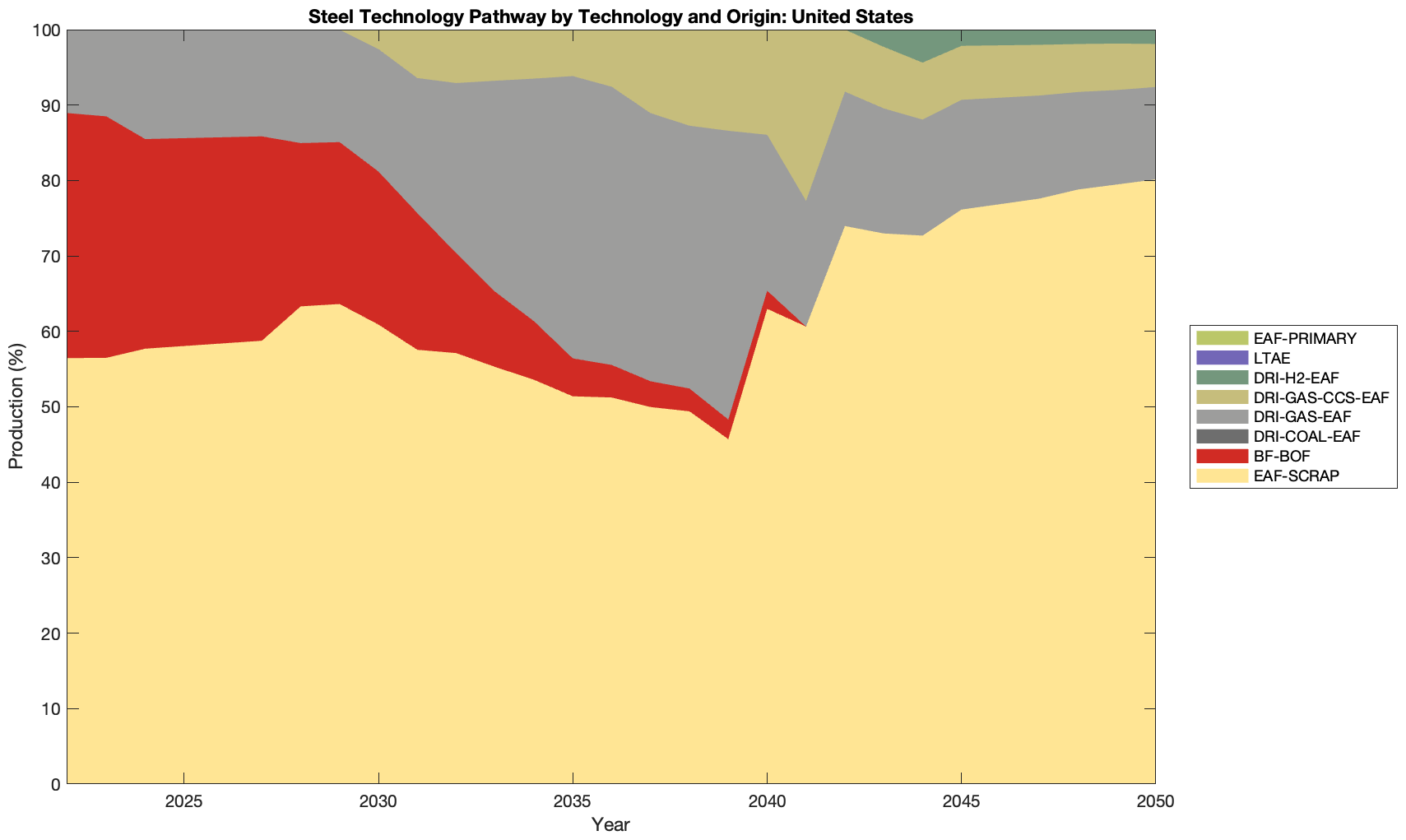
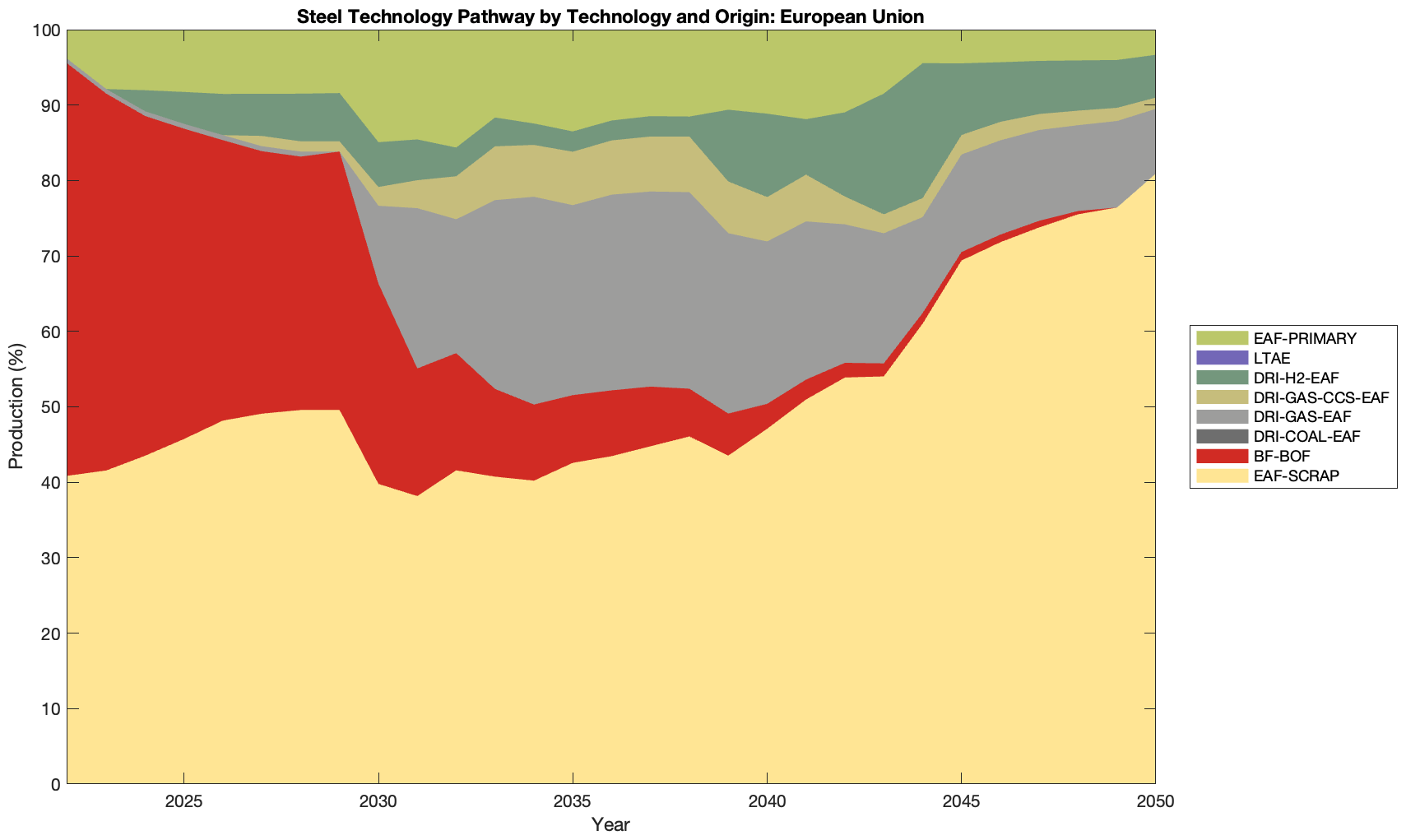
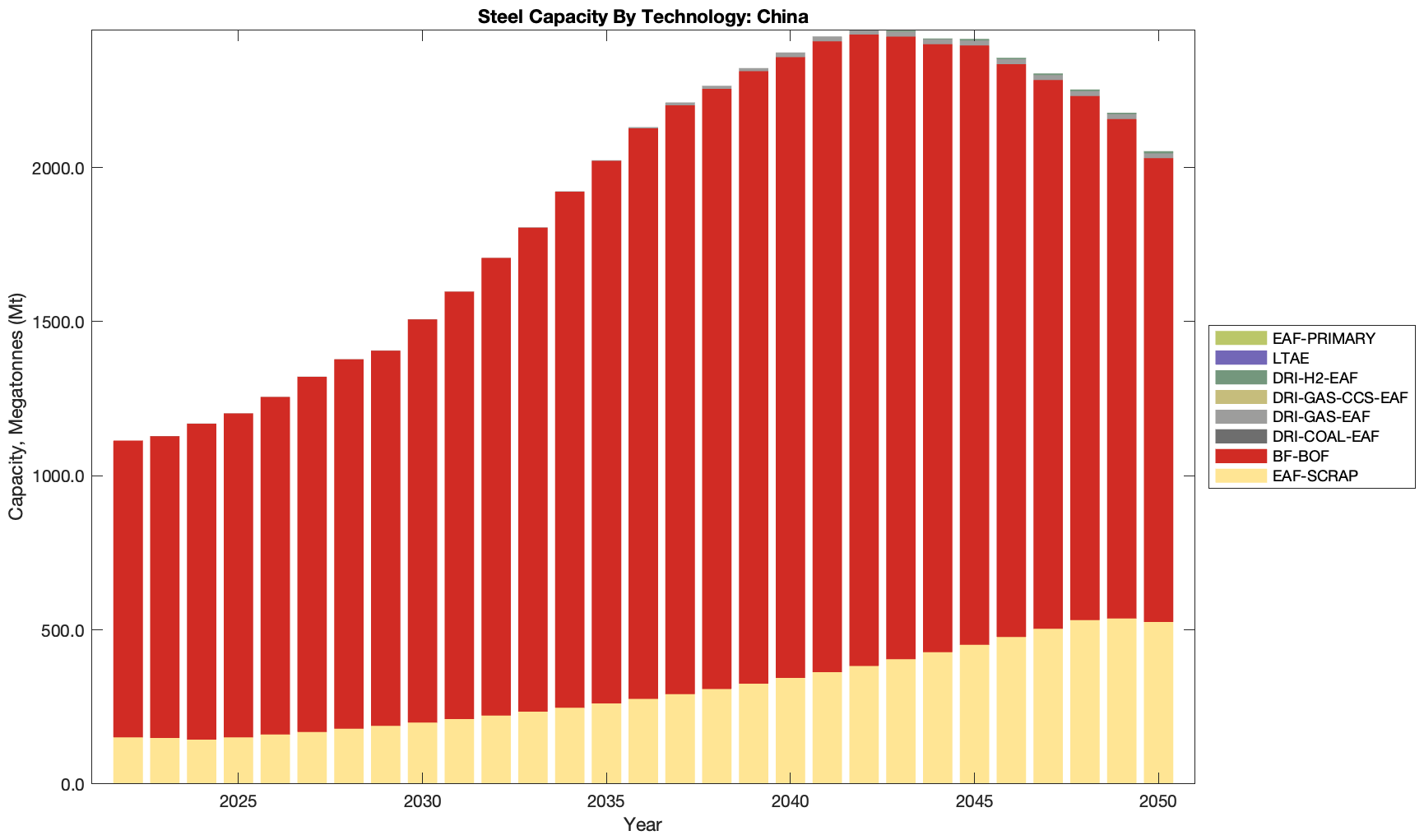
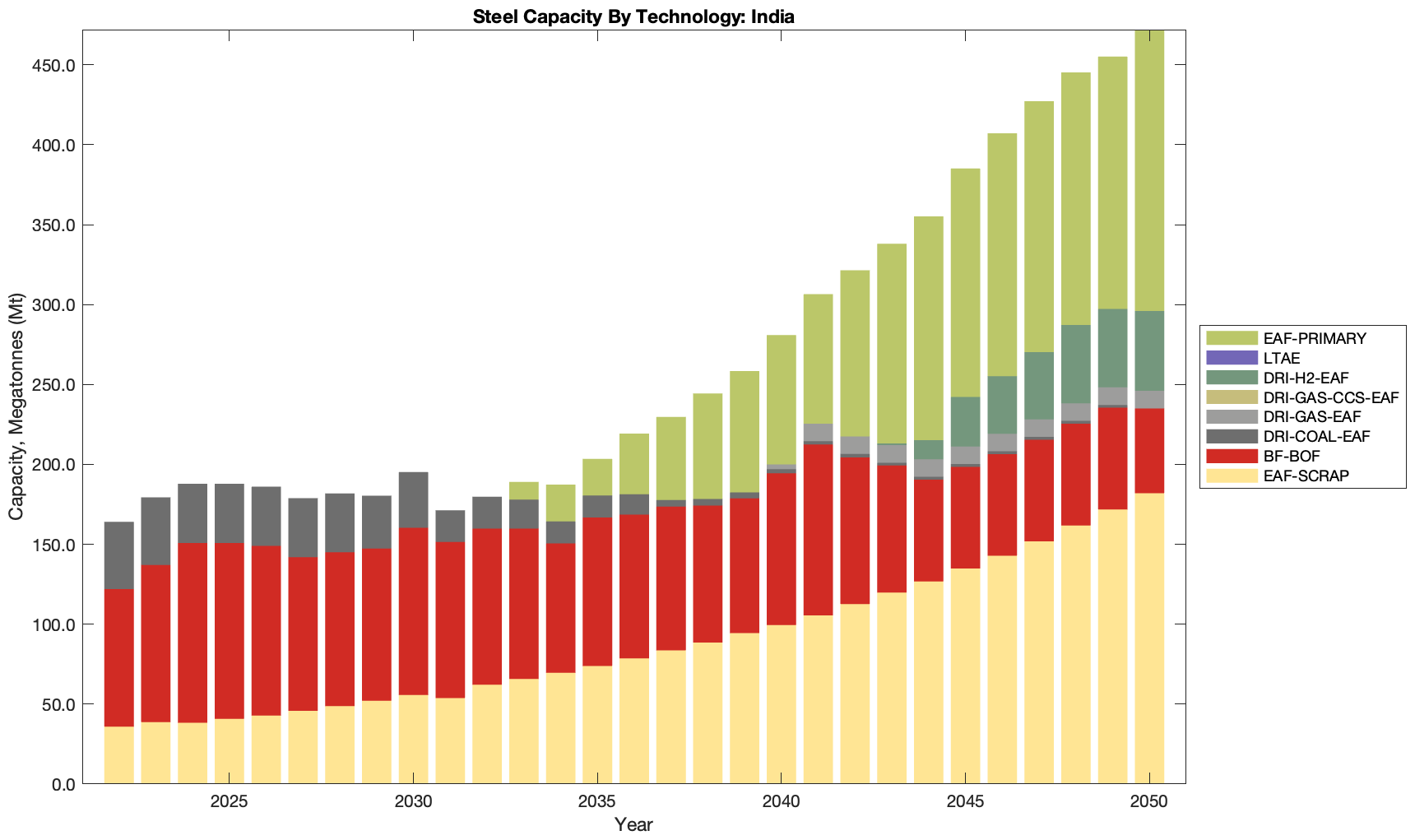
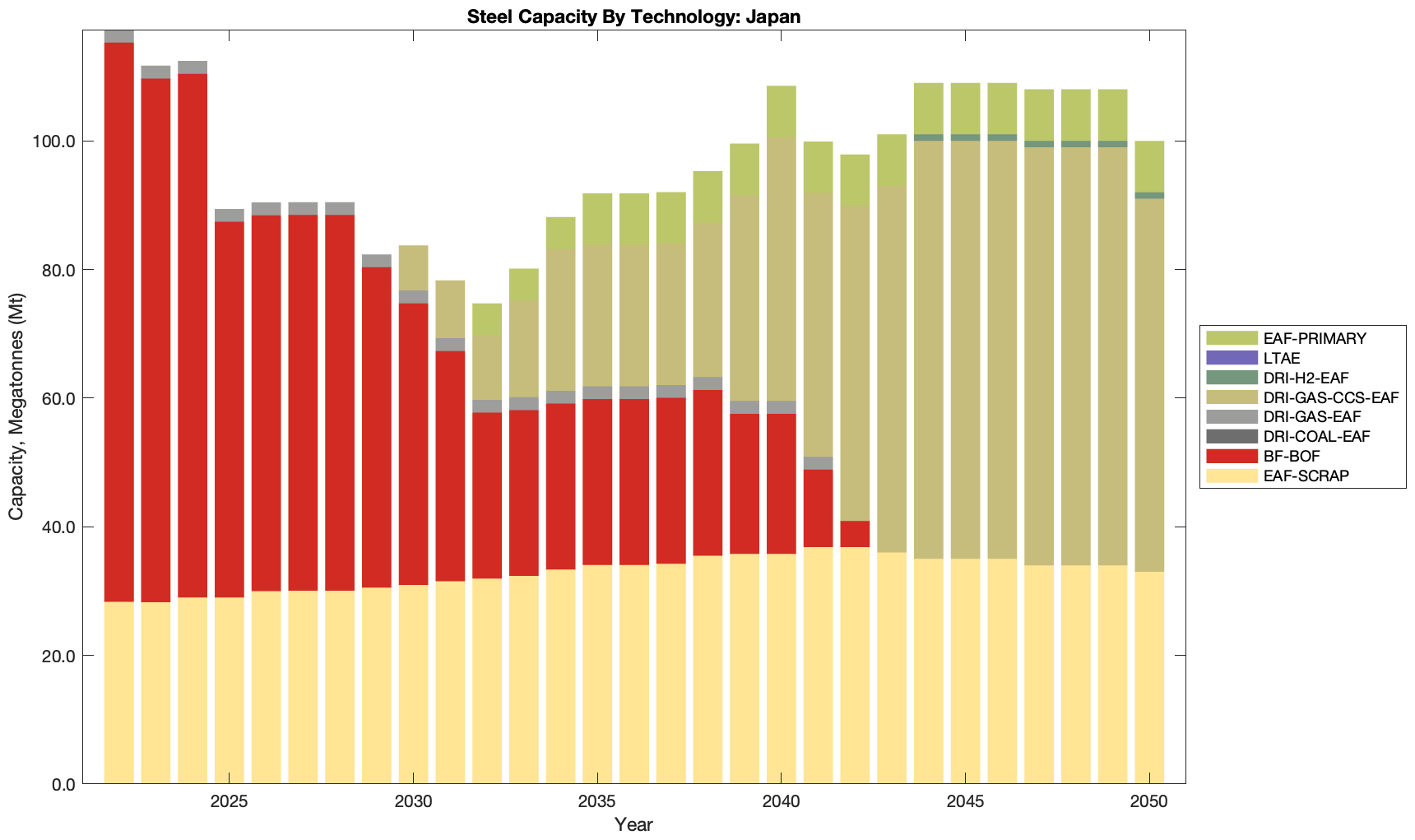
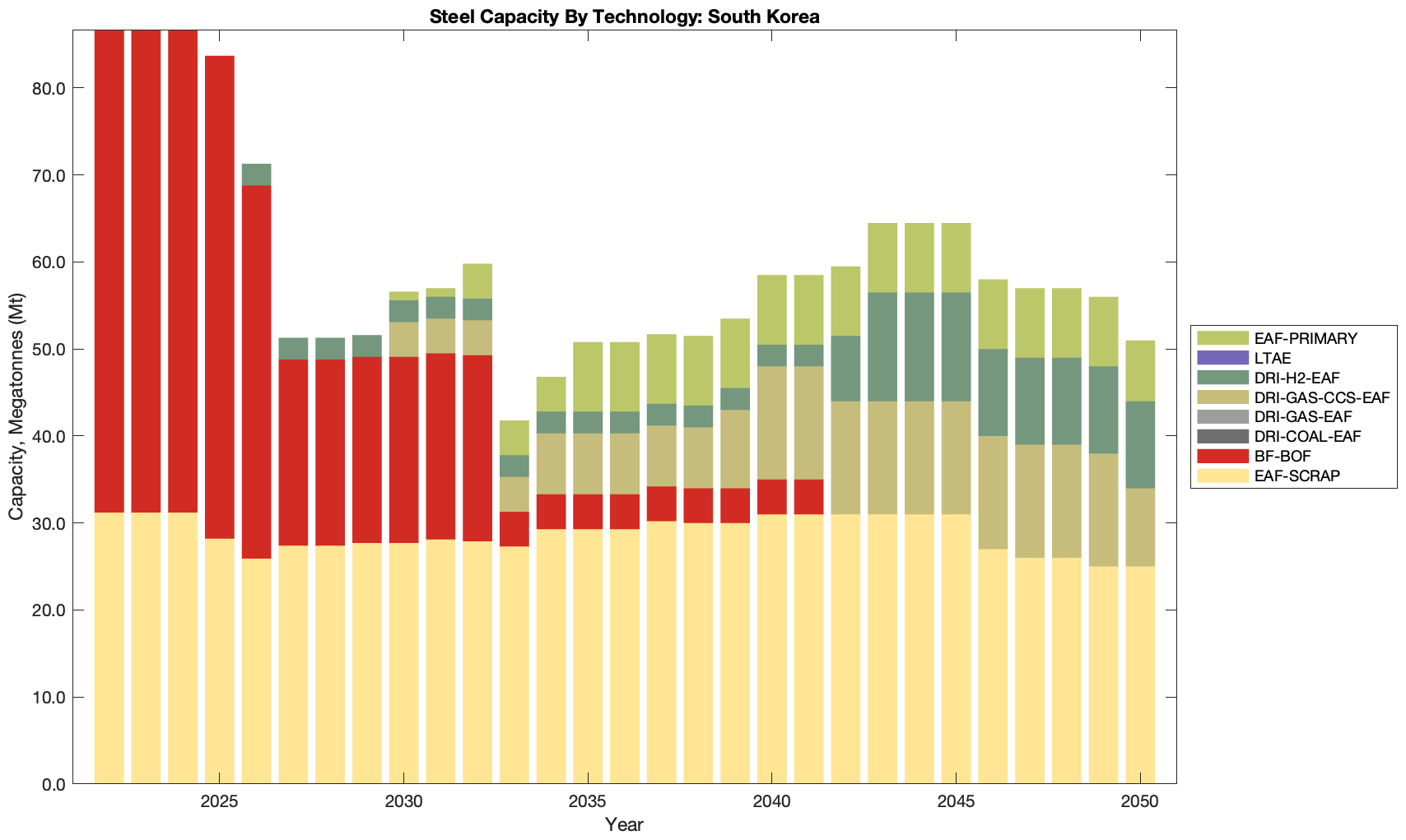
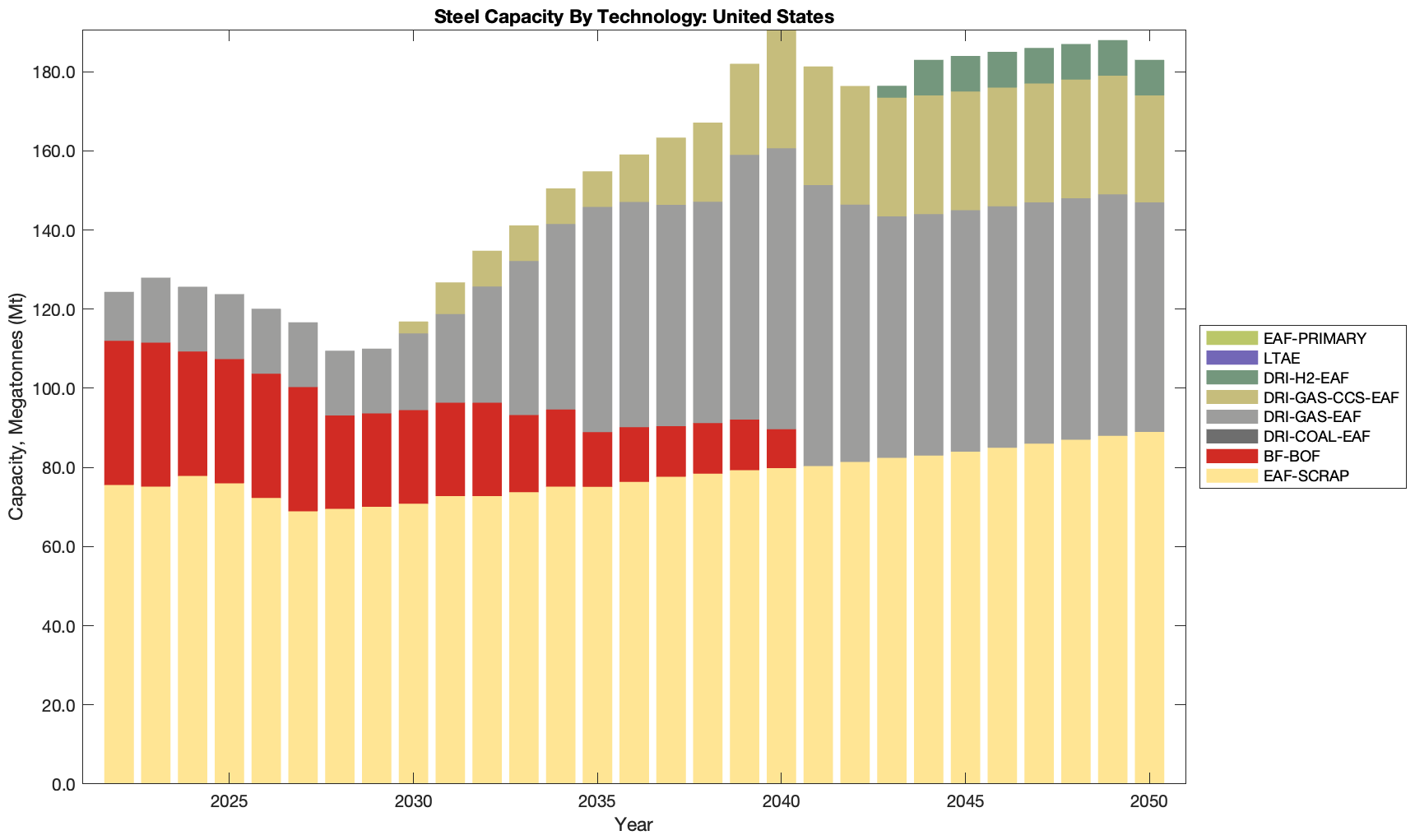
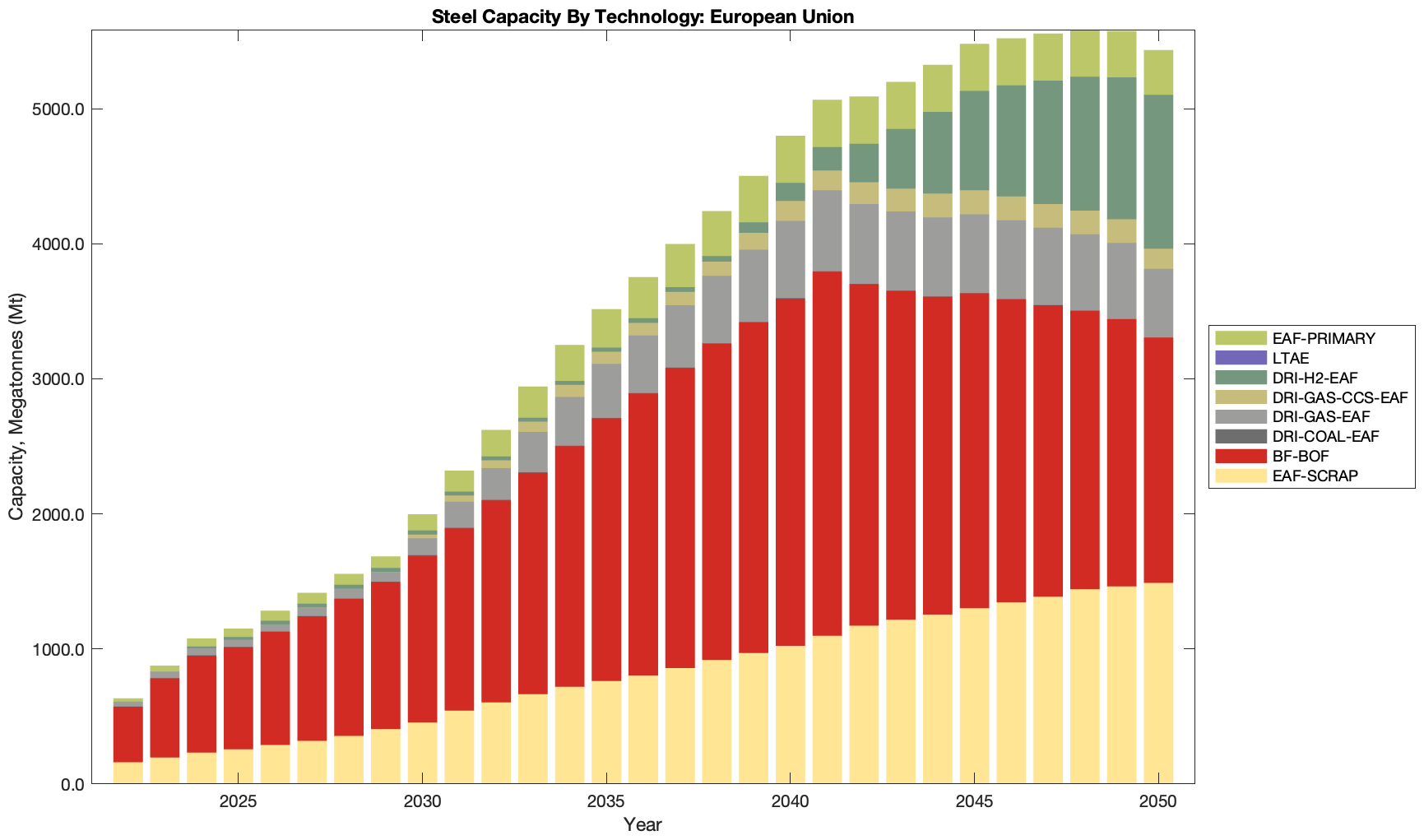
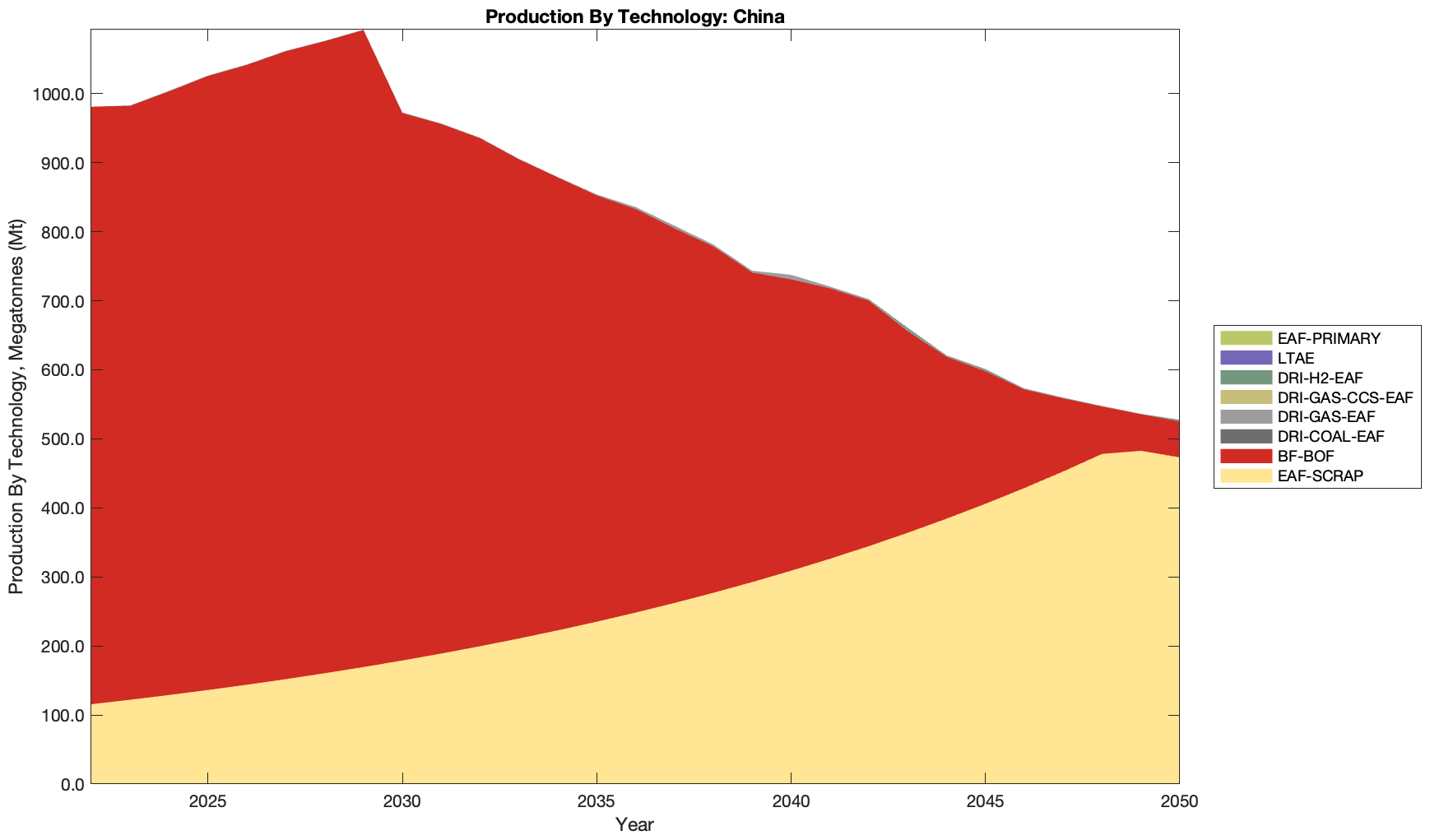

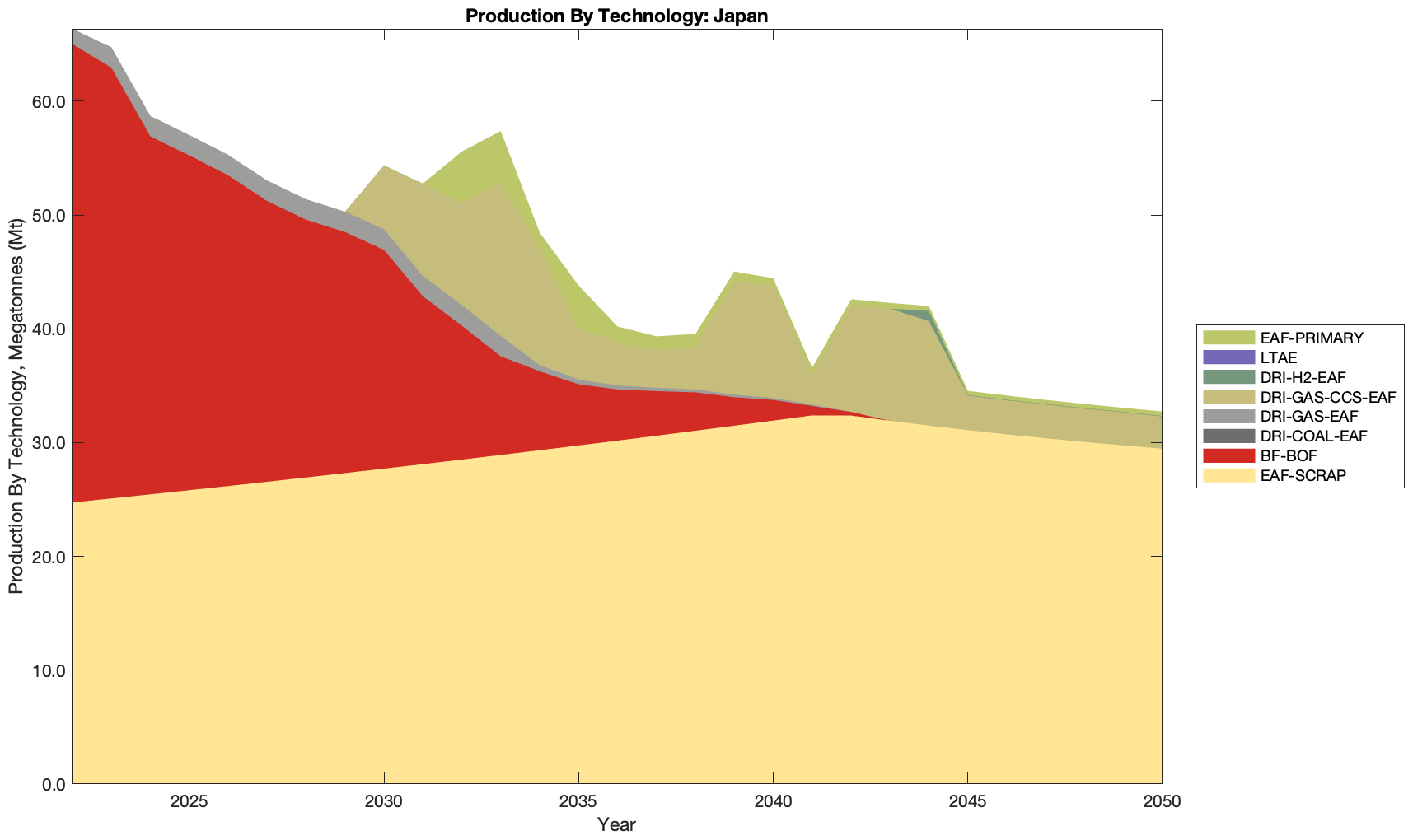

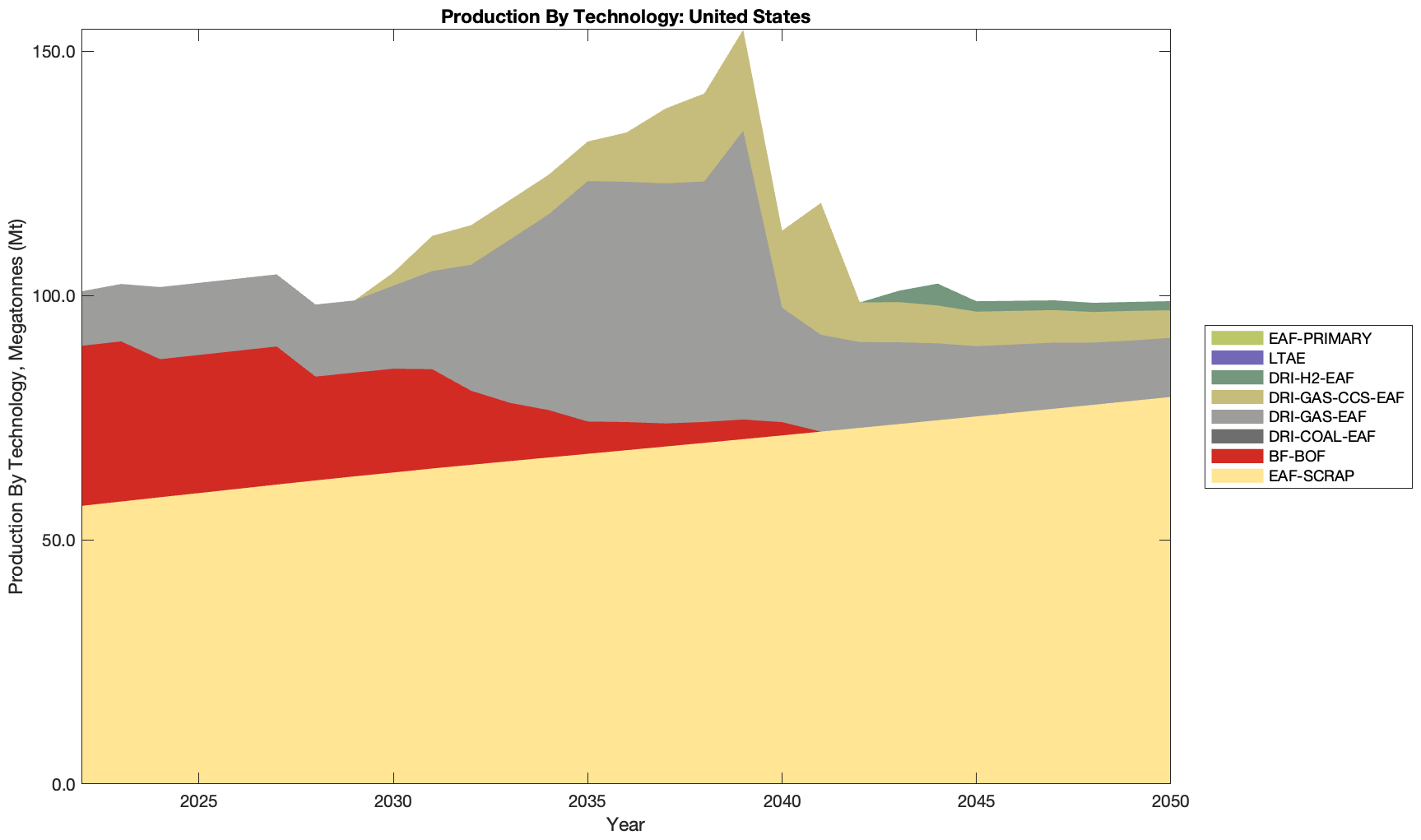

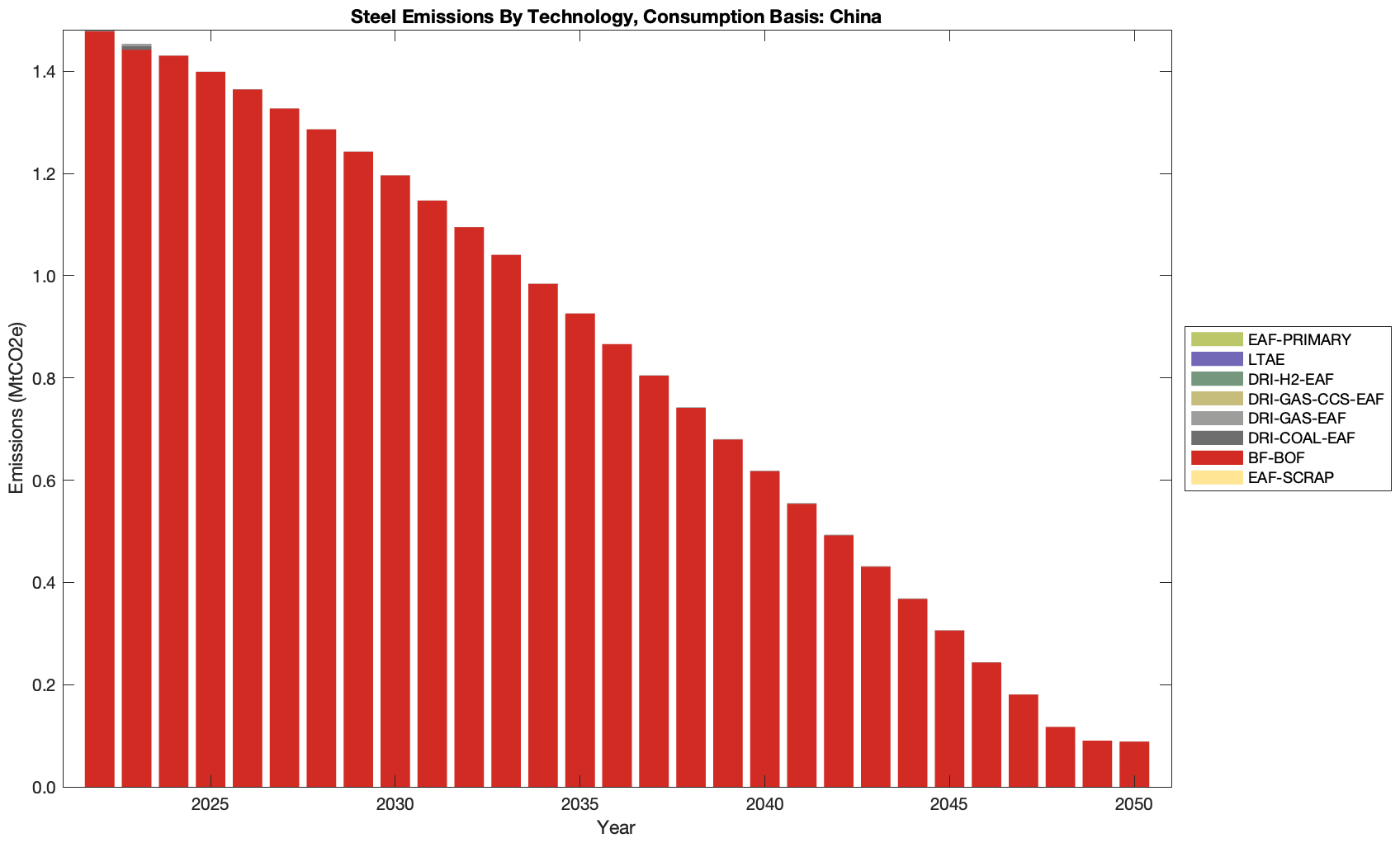
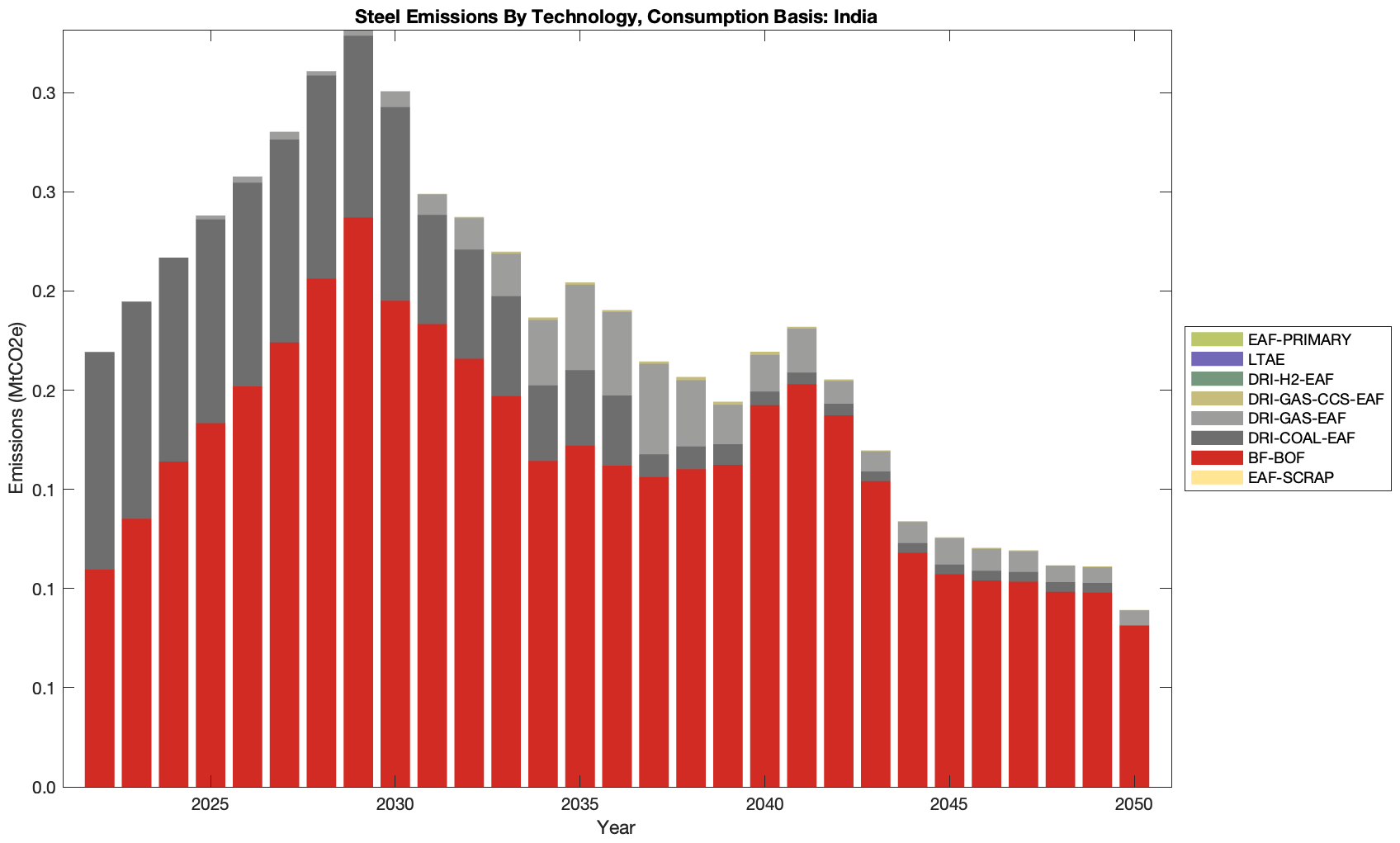
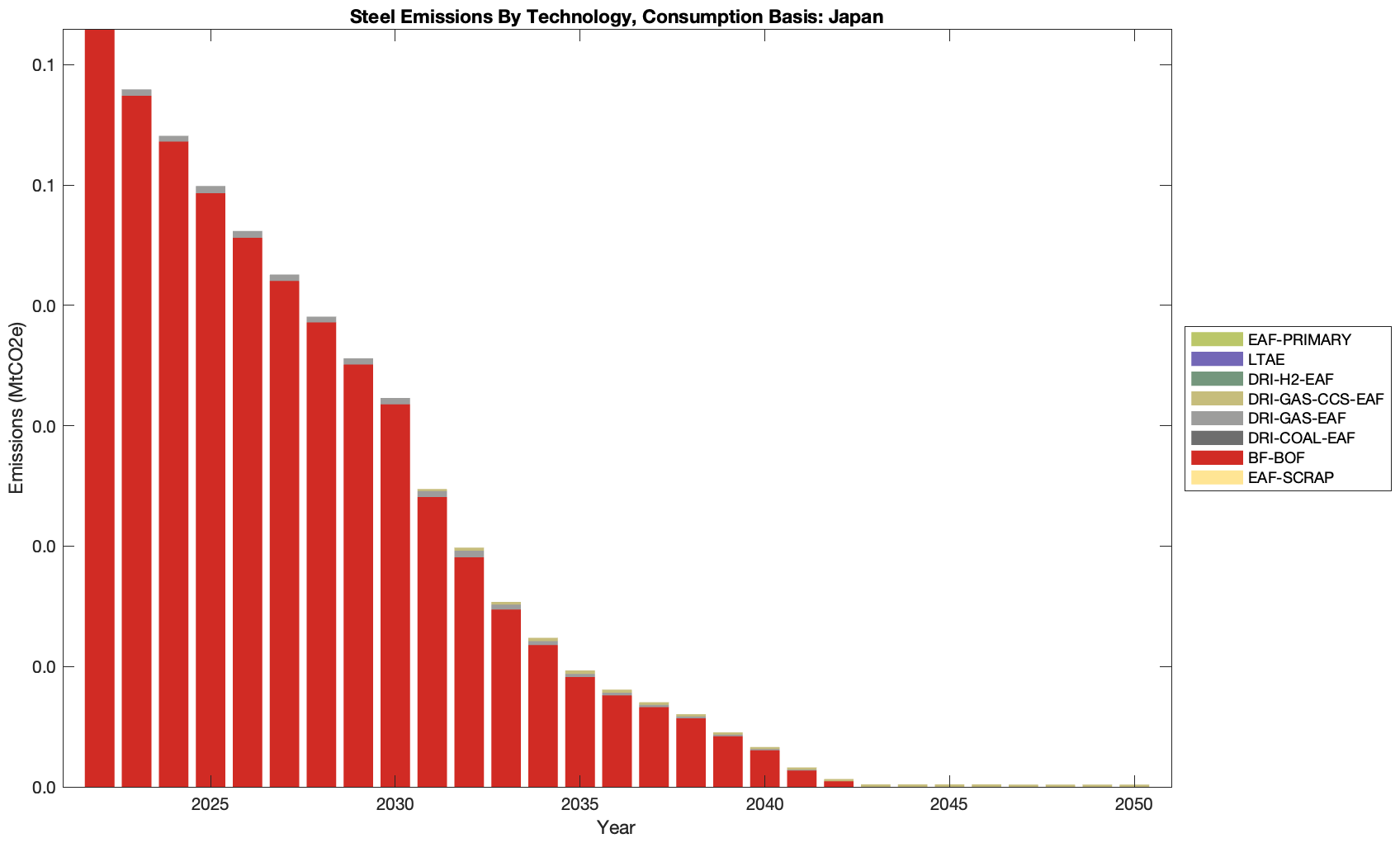

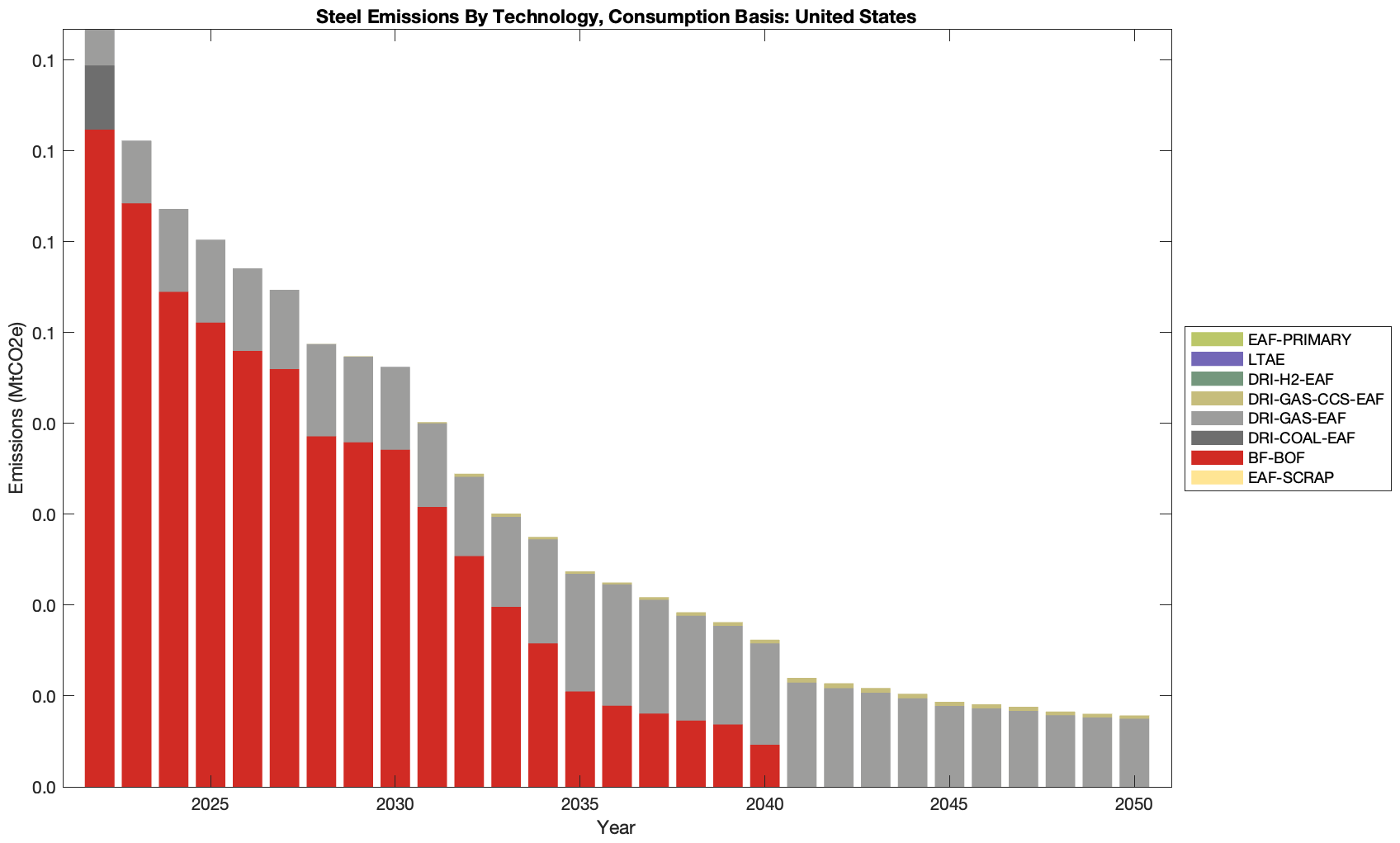
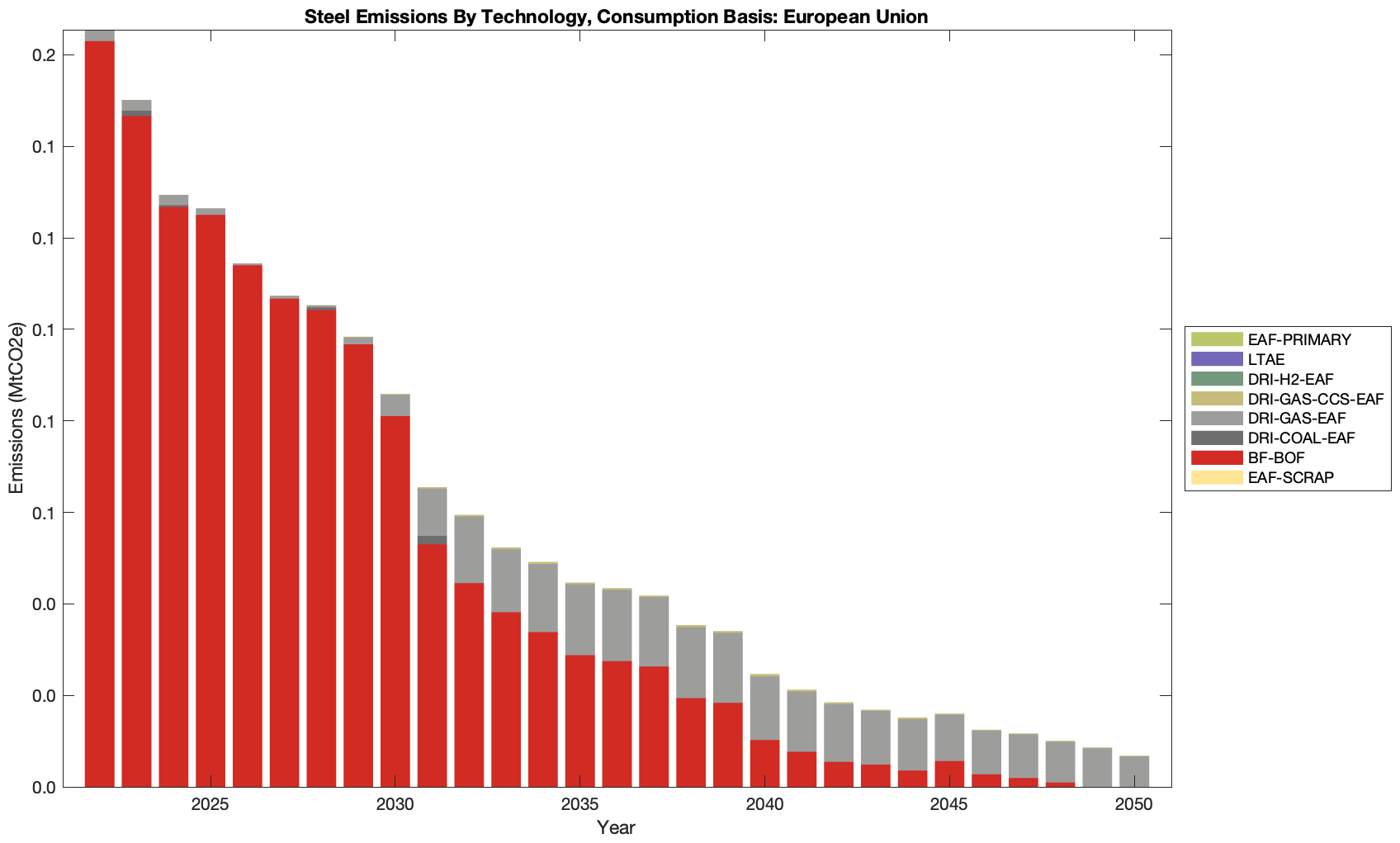
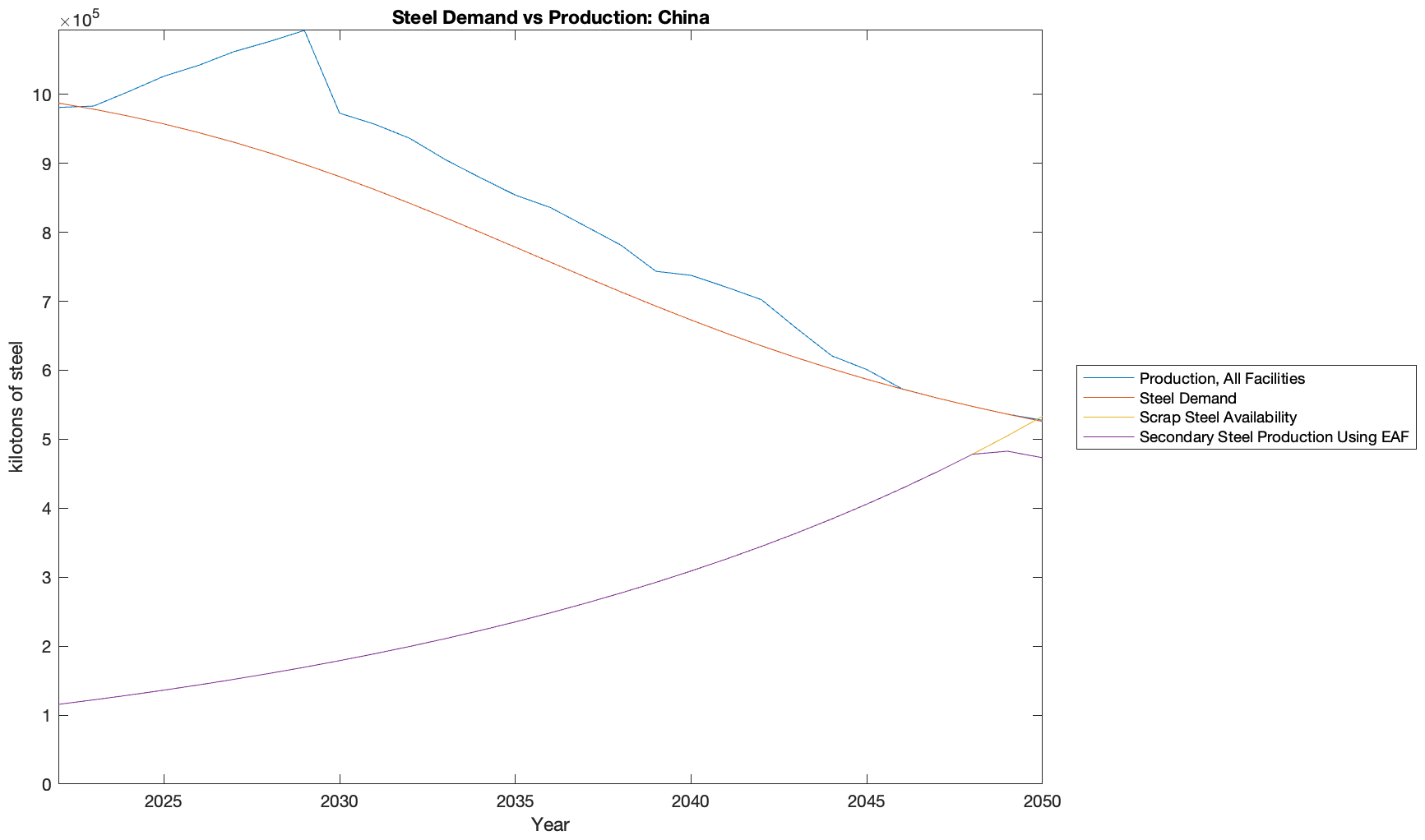
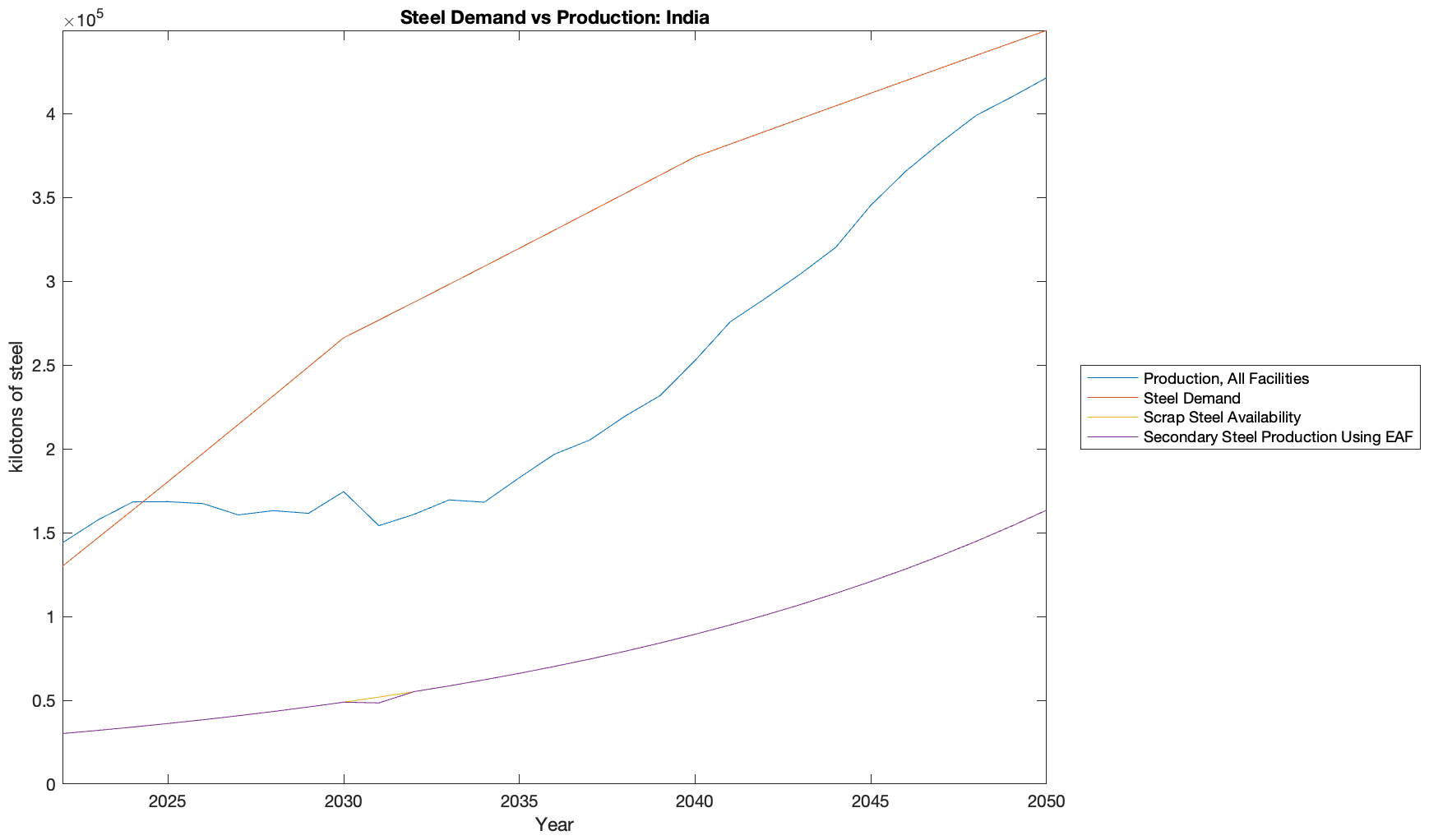
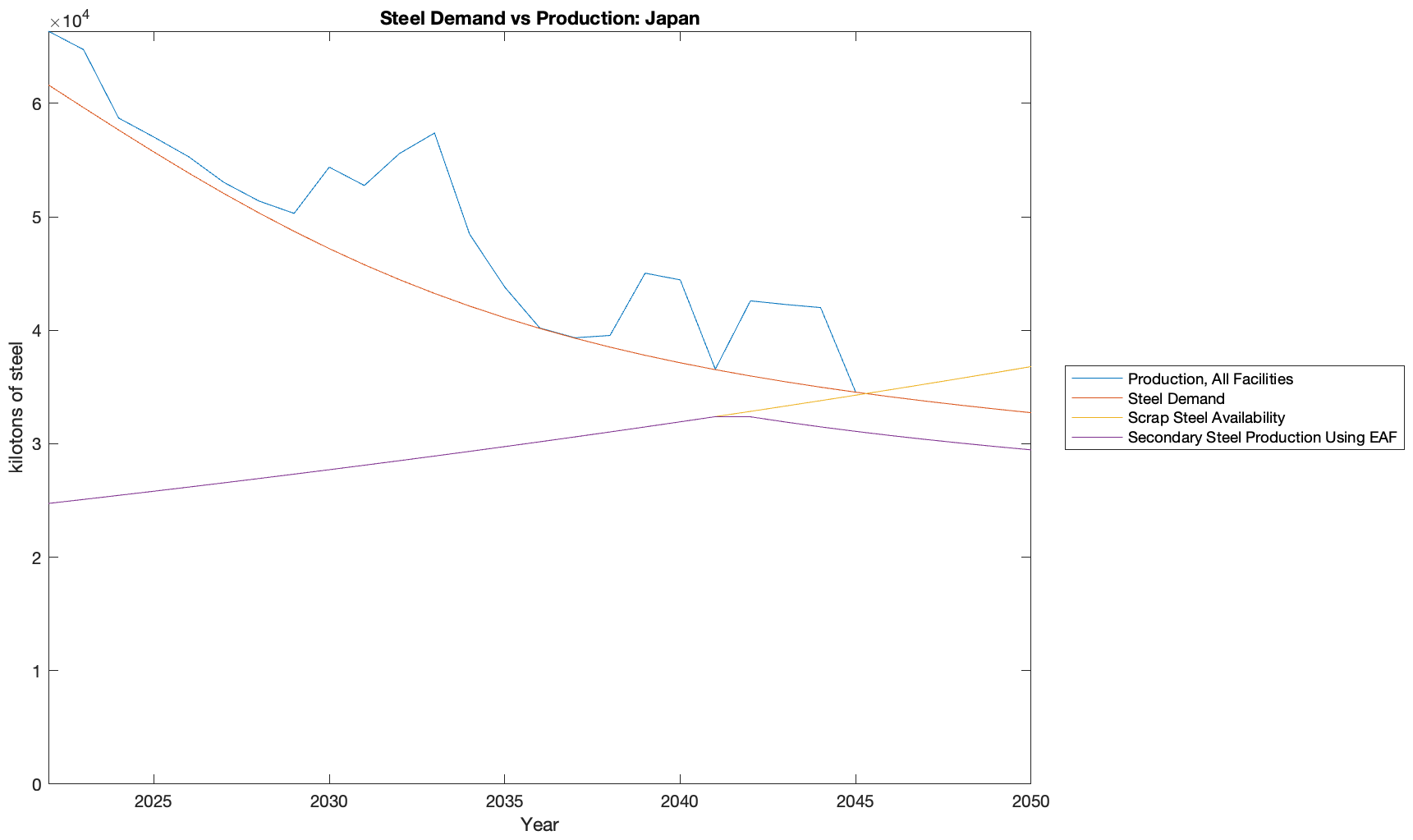

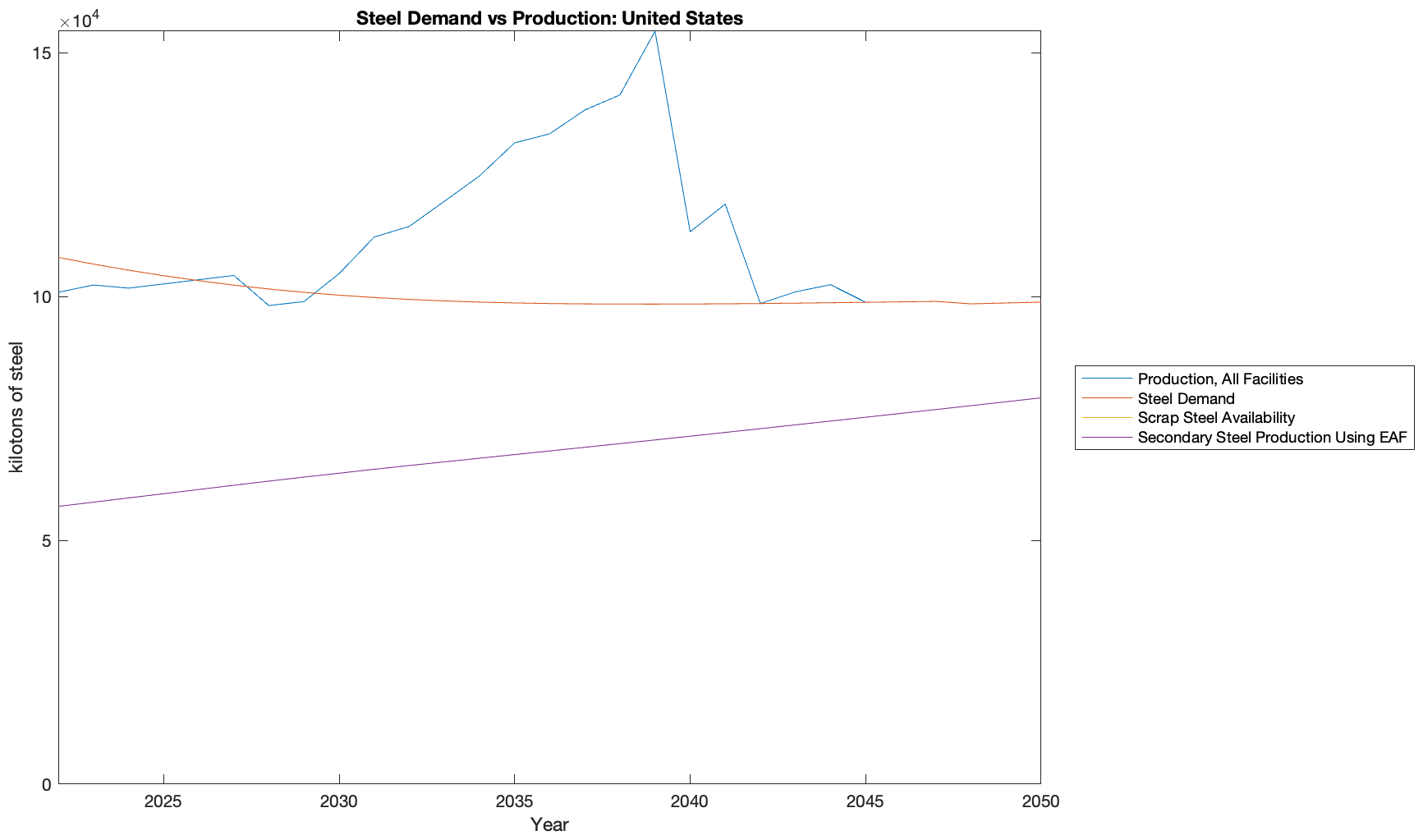

Download
Detailed countries' results
Please select a scenario, an indicator and a country (or area).
Total steel produced by technology type, expressed as a percentage of the total manufacturing fleet.
